Matar Paneer (Easy + Flavorful, Restaurant-Style)
Matar Paneer is a North Indian dish with Peas (Matar) and Paneer in a rich, tomato-based curry. This recipe is easy-to-follow with nuanced, restaurant-style flavor and texture. Includes tips for soft paneer whether you choose to pan-fry it or not. Tested to perfection!
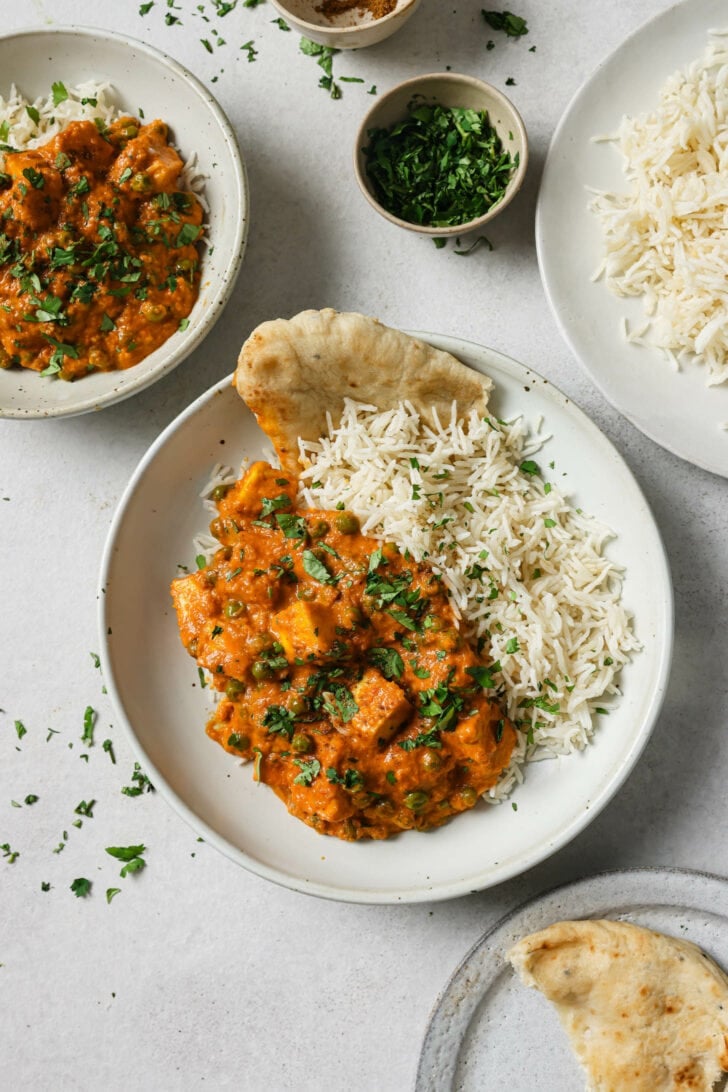
Want to save this post?
Enter your email below and get it sent straight to your inbox. Plus, get recipes & tips every week!
Navigation
- Matar Paneer
- Matar Paneer Ingredients
- How To Make Matar Paneer
- Variations
- What To Serve With Matar Paneer
- Matar Paneer Recipe
Matar Paneer
The first time I made Matar Paneer was from the cookbook, Indian-ish. Prior to that, I have no memory of it. I didn’t grow up with it, nor do I remember ordering it at restaurants. While you can safely categorize most Punjabi dishes as both North Indian and Pakistani, Matar Paneer is decidedly North Indian.
Given my lack of experience, I had no intention of developing my own Matar Paneer recipe. But that initial spark of inspiration, coupled with my obsessive need to experiment, led to a different, yet very delicious variation. Guests kept being drawn to it, and I couldn’t stop making it – paneer makes me feel some sort of way.
So I sent it off to my recipe tester whose response was, “Incredibly tasty! Truly, this is one of my favorite Tea for Turmeric recipes to date (and I have made A LOT!).” I hope you enjoy it as much as she did.
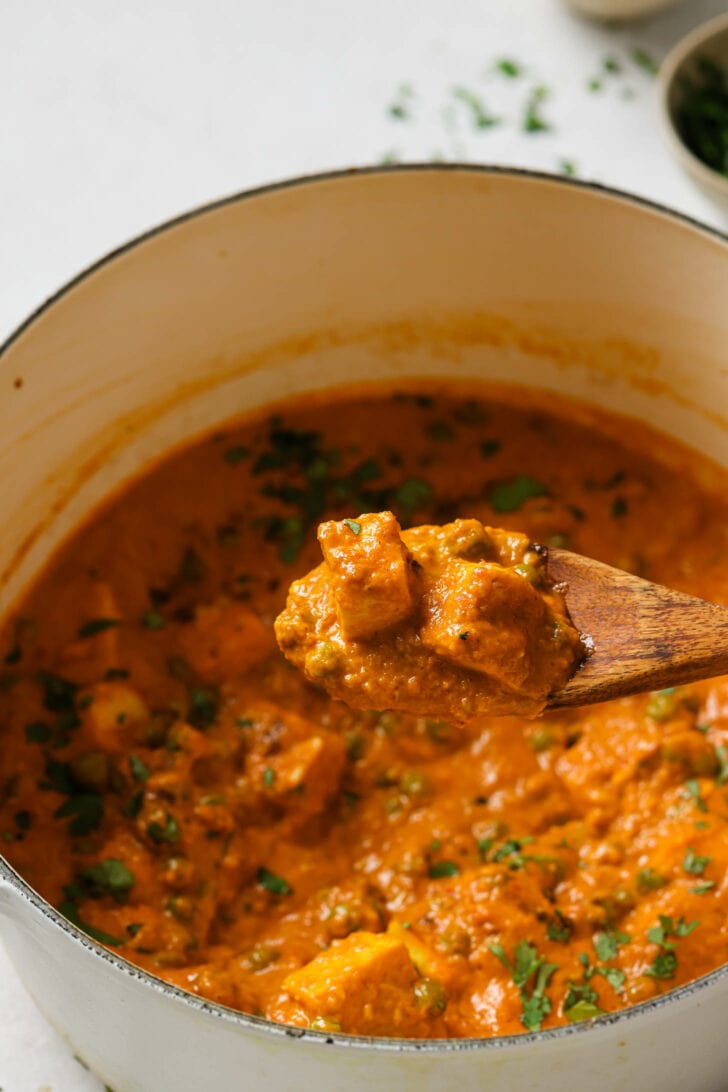
Recipe Testing
Like Palak Paneer, apart from finally trying it at restaurants, I studied Matar Paneer in 10 different cookbooks to compare different ingredients and methods. I learned:
- 8 out of 10 recipes didn’t use cream. The two that did (Dishoom & 660 curries) had restaurant-inspired recipes. I prefer the creaminess of restaurant-style Paneer so I do include a small amount.
- 8 out of 10 didn’t purée the masala. Again, blending the masala is only necessary if you’re going for a restaurant-style sauce. This recipe calls for blending, but it’s designed to work either way.
- Many recipes asserted that it’s better to pan-fry the paneer in this dish. I find there are advantages to both:
- Adding it raw allows it to soak in the flavors of the curry and get very tender.
- Pan-frying in butter or ghee lends the paneer itself a more complex flavor and crisp texture, making it more restaurant-like.
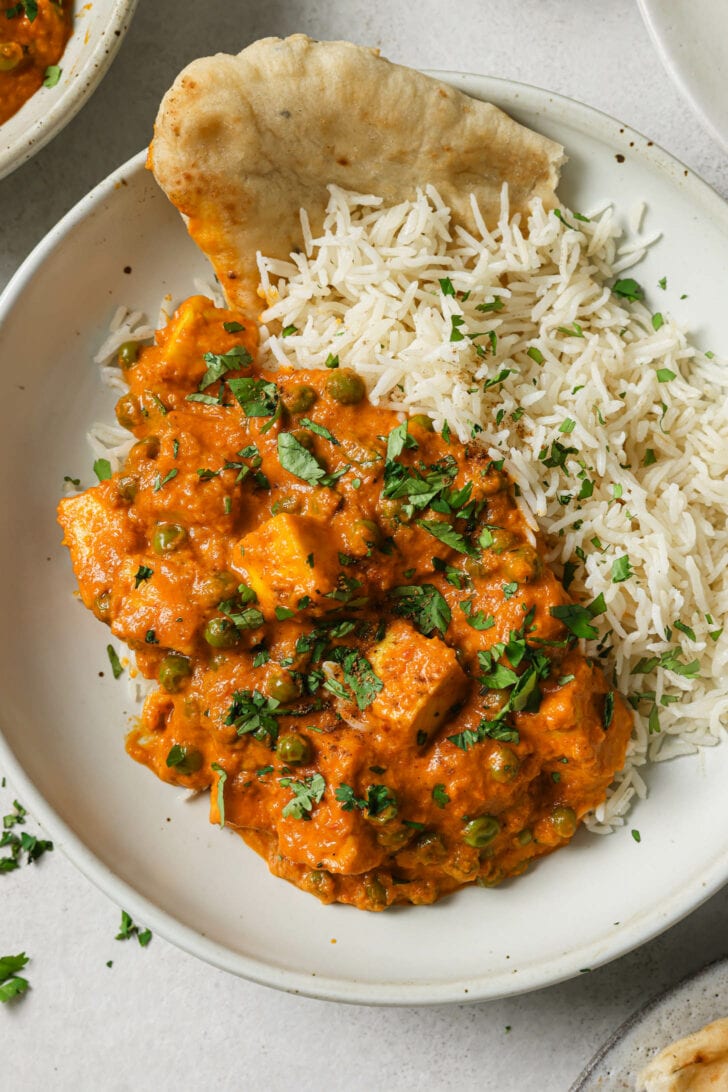
Most cookbooks mentioned something along the lines of its popularity at restaurants, which I feel must have declined. I still see Matar Paneer, just not on every menu. It’s often replaced with some Makhni-esque form of paneer.
Matar Paneer vs Butter Paneer
I spoke to a Houston restaurant owner about this (Elite Indo-Pak – they make great Matar Paneer). He confirmed what I understood from studying the recipes:
- Matar Paneer is onion-tomato masala based.
- Butter Paneer, or Paneer Butter Masala, uses the Makhni Sauce that restaurants use for Butter Chicken and the like.
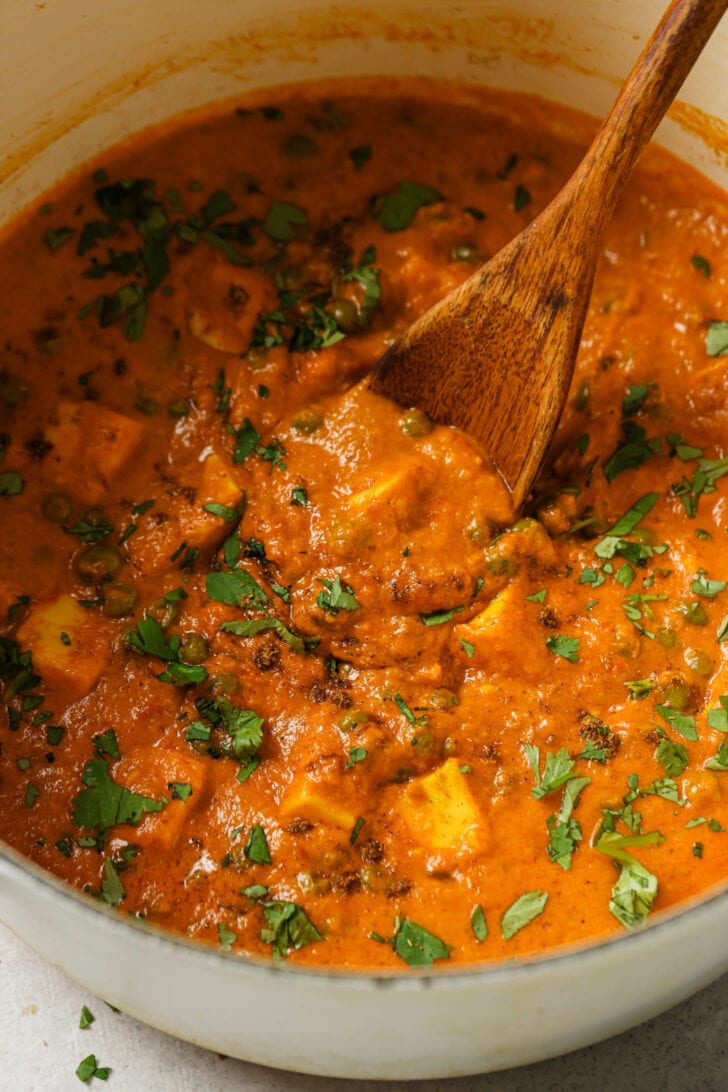
Matar Paneer Ingredients
Paneer
Made from curdled and strained cow’s milk, paneer is categorically a cheese but not cheesy in taste. You’ll often hear it called Indian Cottage Cheese, but apart from a similar curdling method, it bears little resemblance to cottage cheese. Paneer is mild, and tastes more like a concentrated form of everything you love about milk.
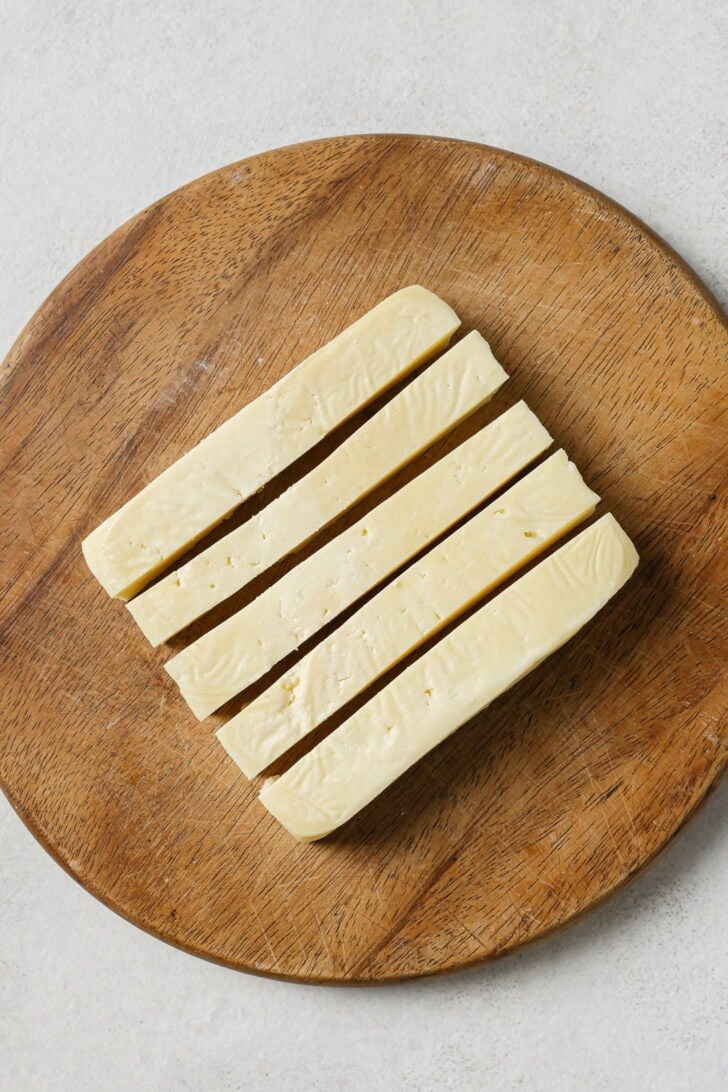
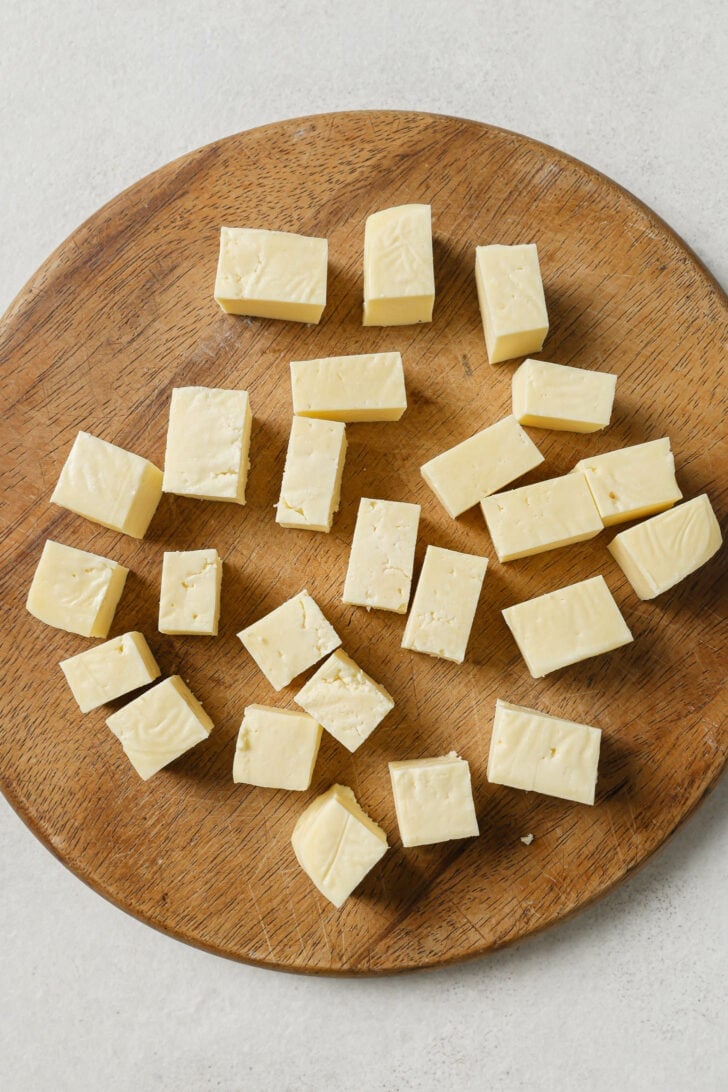
- Where to find: It’s now available at many supermarkets, though I mostly get mine from Indo-Pak grocery stores.
- To Store and Thaw: I keep the blocks in the fridge if I’m using it that same week, otherwise I store in the freezer. Thaw the block in the fridge the night before you plan to use it.
- Substitutes: Though I haven’t tried any myself, I’ve seen options to replace Paneer with everything from Tofu (made from soy) to Queso Fresco (similar to Paneer in preparation). Halloumi would also be an excellent, albeit saltier option.
Notes on other Key Ingredients
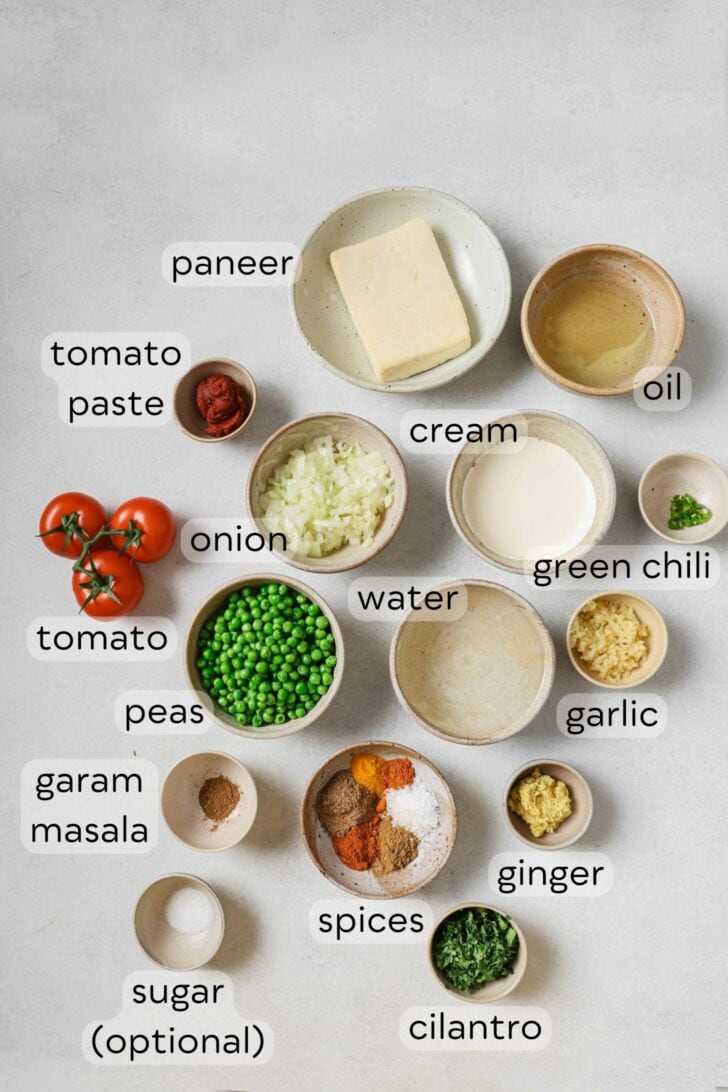
- Onion: A large onion creates a thicker sauce. To create a thinner sauce, use less onion.
- Tomato paste: Matar Paneer is known for its rich tomato base, and tomato paste is essential here to deepen the tomatoey flavors.
- Vine or Roma tomato: The quality and flavor of the tomatoes matters, so try to use ripe, tasty ones.
- Green chili pepper: I use a Serrano or Thai Chili pepper. See FAQ for more info on green chili peppers.
- Spices:
- A green cardamom pod to brighten with floral notes.
- Coriander powder and cumin powder (or cumin seeds for texture) to create full-bodied flavor in the sauce.
- Kashmiri chili powder or paprika for deep red color and red chili powder or cayenne for adequate heat.
- Turmeric powder for color and to round out the spices.
- Garam masala: To enhance final aroma, flavor, and texture.
- Sugar (optional): A touch of sugar brings out the sweetness of the tomatoes. I always add this, but you can skip if you don’t find it necessary.
- Frozen green peas: Use regular or petit peas. In this recipe, I suggest thawing the peas to help them cook faster. To quickly thaw, put the frozen peas in a bowl and run warm water over it. Then strain before using. If you forget to thaw, simply cook them for longer.
- Heavy whipping cream: Or double cream for those in the UK. May also use half & half.
- Dried fenugreek leaves (Kasuri Methi): Not as readily available as the rest of the ingredients, but also not an essential in this particular recipe. Crush the methi between the palms of your hands to help extract its flavor.
How to make Matar Paneer
Prepare Onion-Tomato Base
Side note: Because you’ll be using a food processor to purée the tomatoes and mixture eventually, I suggest also using it to chop the onions, garlic, and ginger.
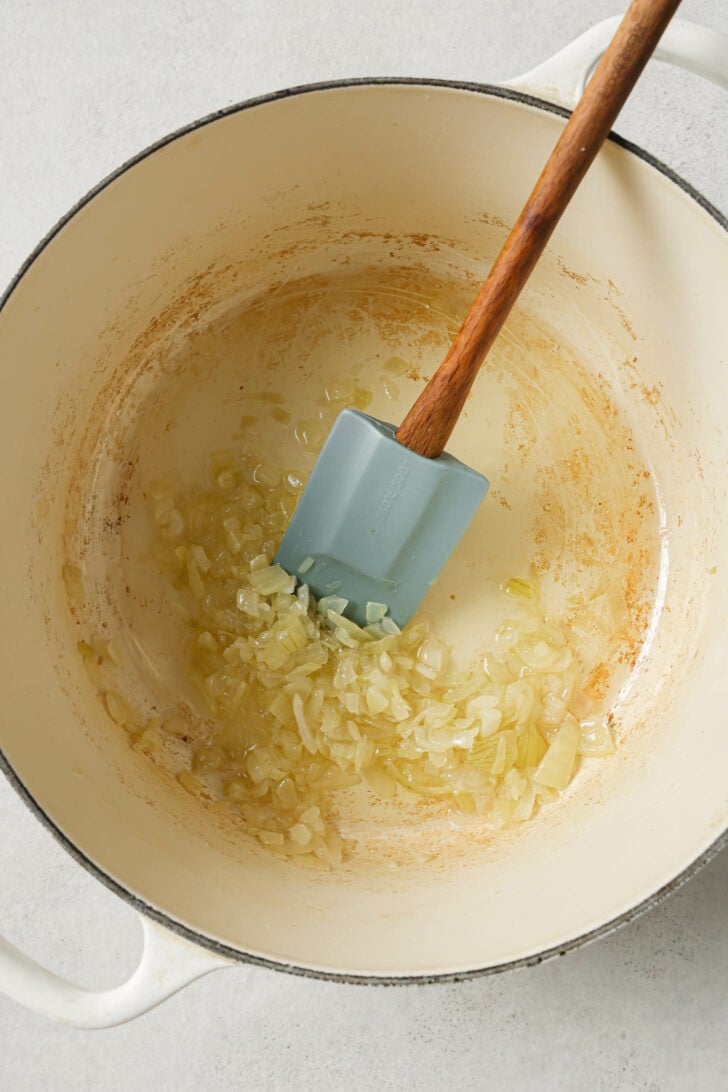
- Sauté the onions until golden, then deglaze with a splash of water. Continue sautéing until the onions turn a deeper brown color.
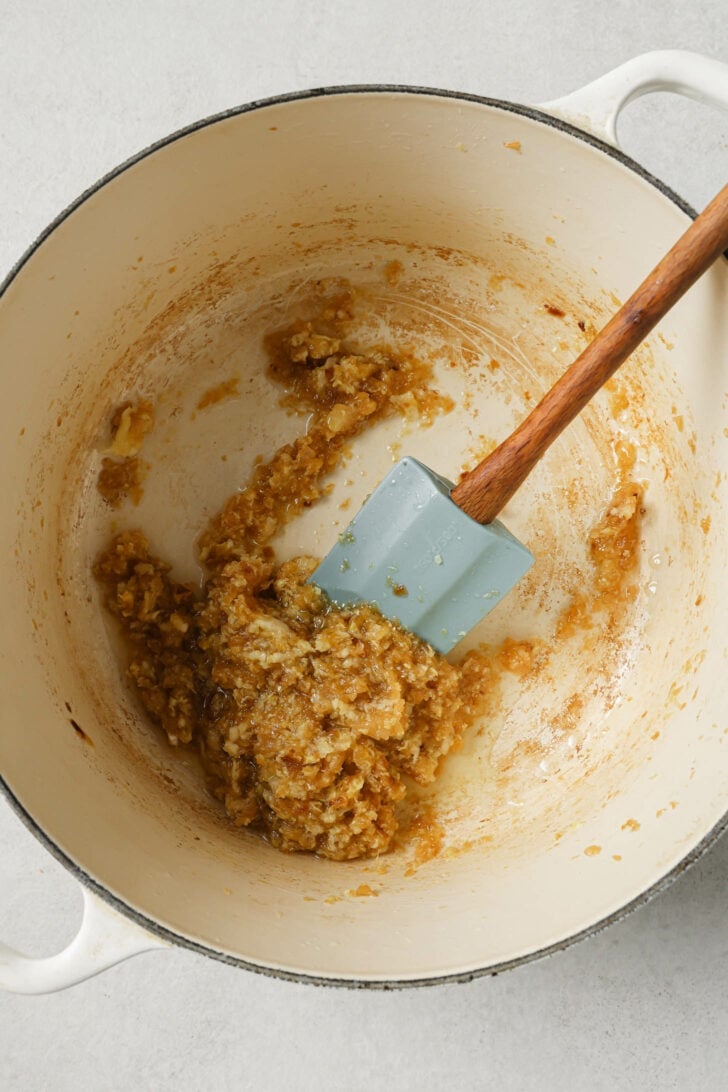
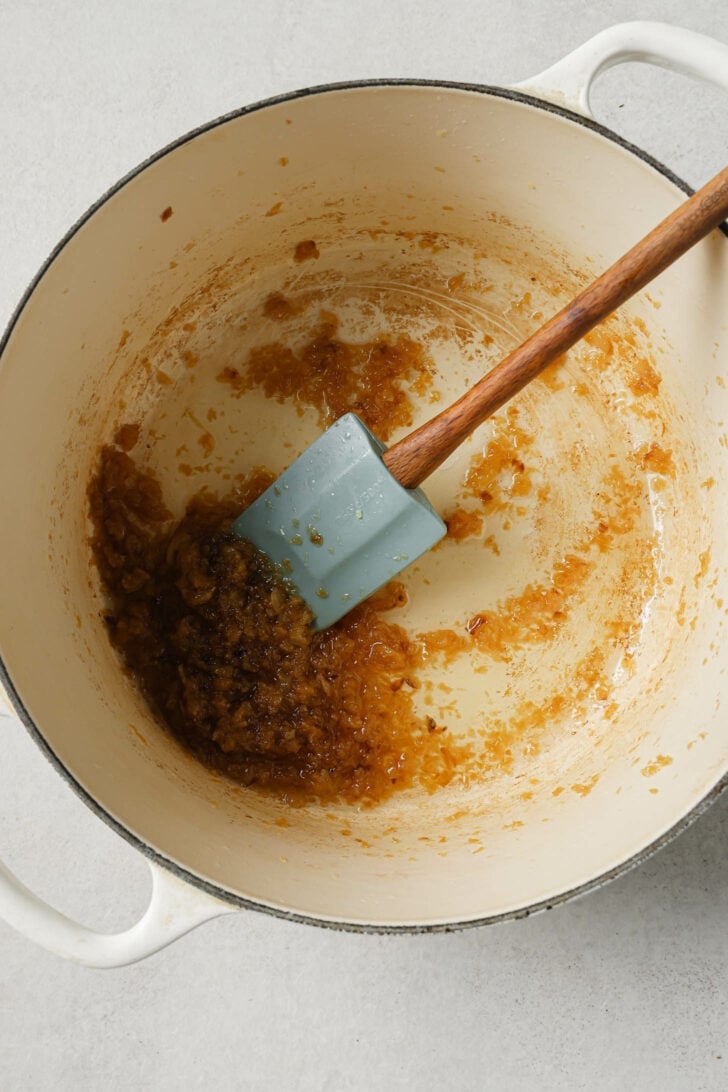
- Add the tomato paste, puréed tomatoes, green chili pepper, spices, and salt and continue to cook until the tomatoes are reduced. The texture will be jammy, with oil separating from the sides to indicate it’s cooked.
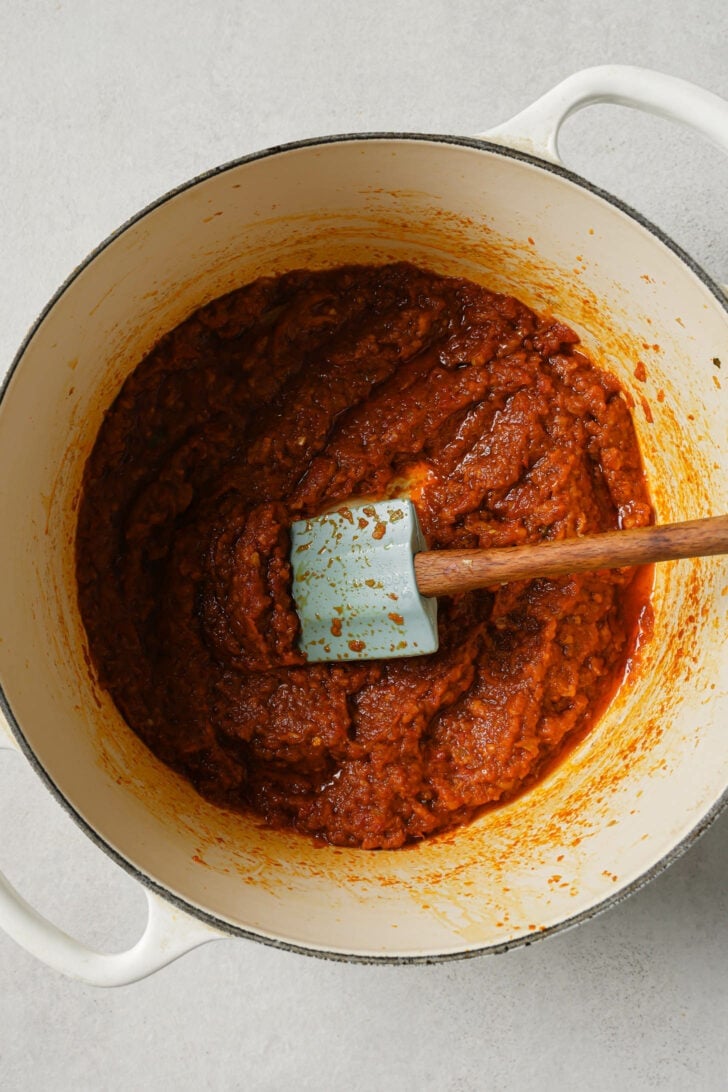
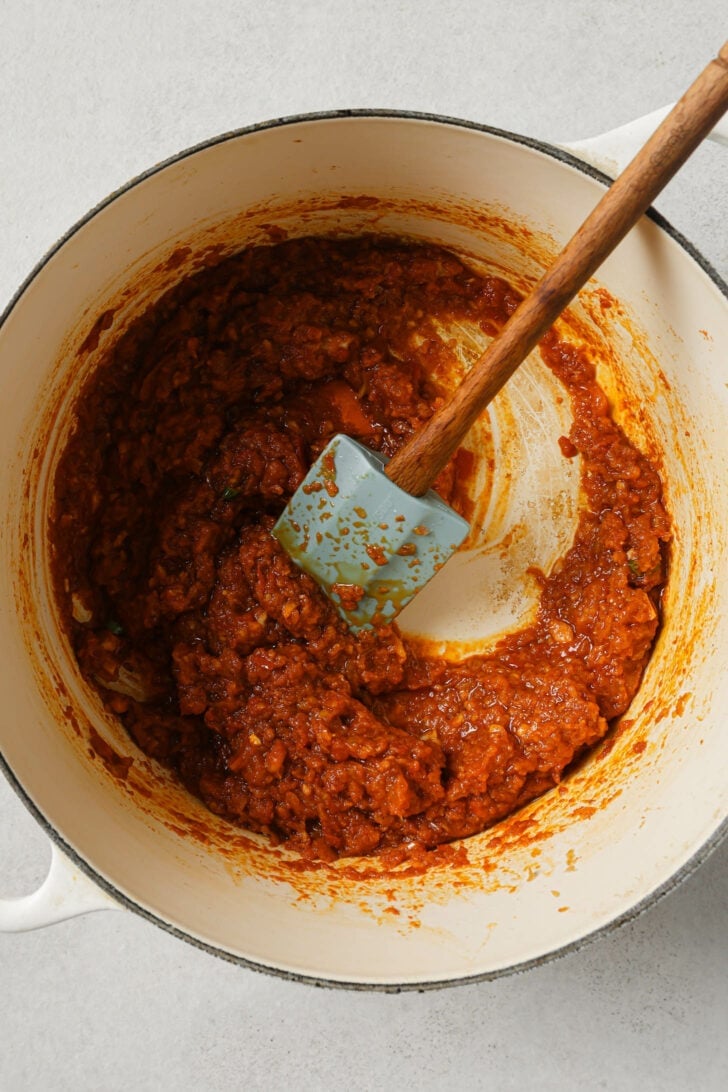
Purée the Masala
- Once slightly cooled, or at least not scalding, transfer it to your food processor and blend to a smooth paste. Pour the sauce back into the same pan along with the water. I usually add water to the food processor, swirl it around or process again to catch the remaining sauce, and pour into the pan with the sauce.
Note: This step is not absolutely essential (only 2 of 10 recipes in my cookbook study puréed the mixture). But I love how it makes a smoother, restaurant-like sauce. If you’d rather not purée, skip Step 3, add the measured water, and proceed with the recipe.
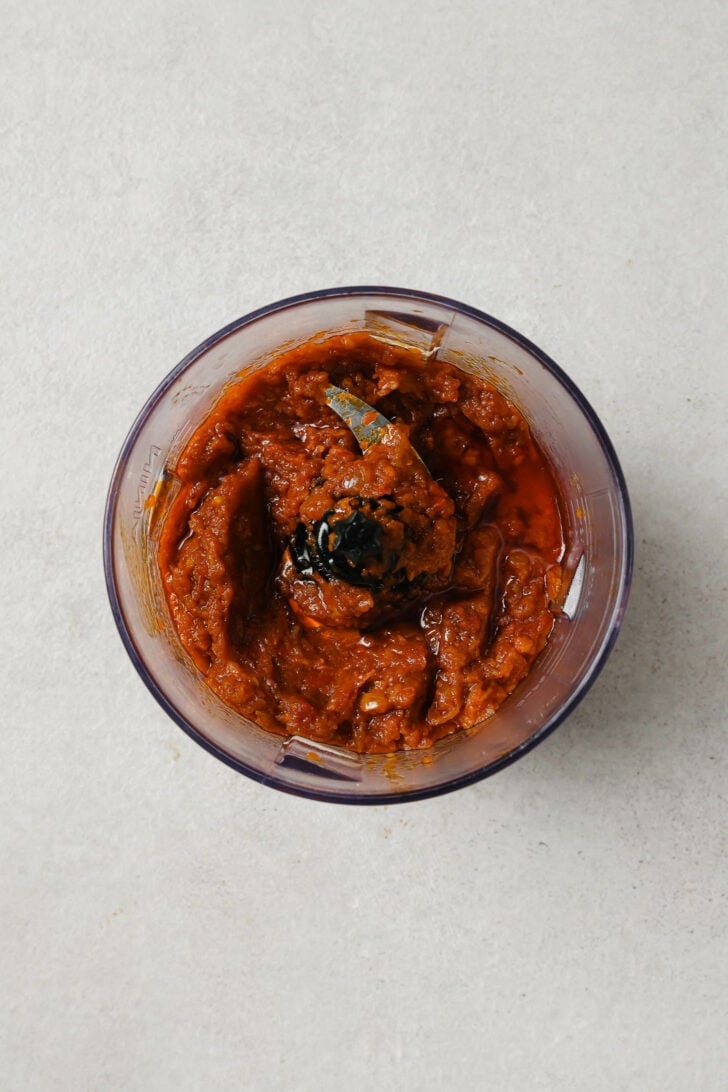
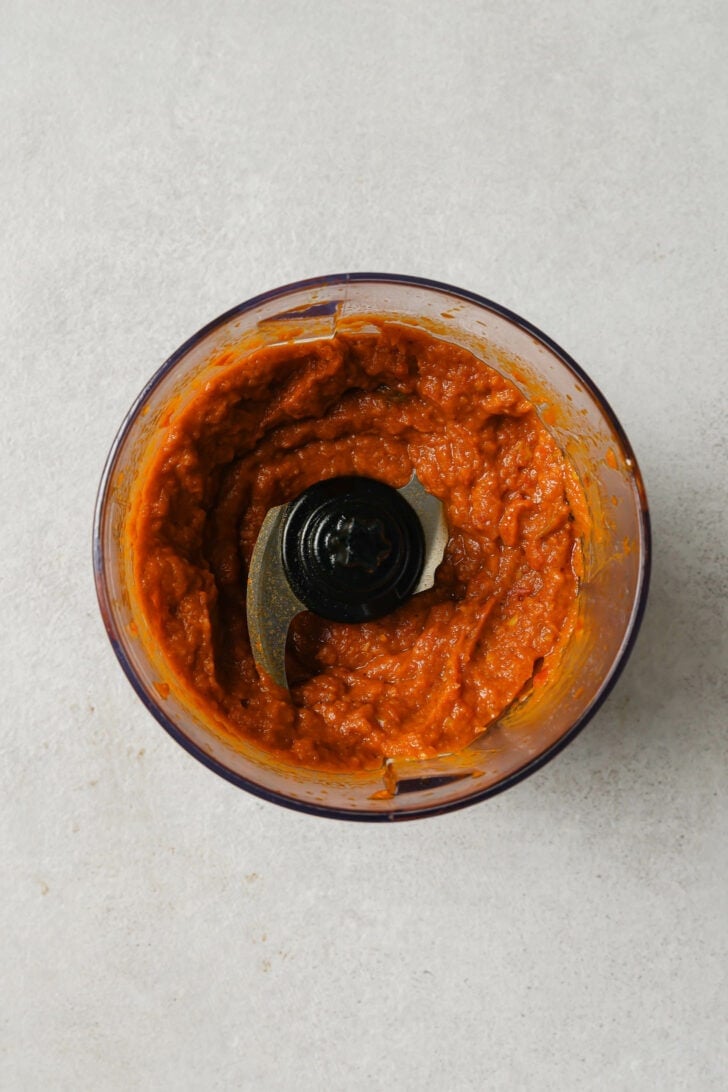
Optional: Pan-fry Paneer
Pan-frying gives this already-festive dish a luxurious finish. Here are some tips if you choose to pan-fry:
- Use a non-stick pan, which prevents paneer from sticking.
- To prevent paneer cubes from popping, reduce the heat and keep turning. It may also help to pat with a paper towel to dry excess water before using.
How to keep pan-fried paneer soft:
I have obsessed over this, frying batches of store-bought paneer* at different temperatures and for various durations. Here’s what I’ve learned:
- No matter how you fry the paneer, if you let it sit too long after pan-frying, it gets tougher as it cools down.
- If you’re pan-frying, do so when the recipe suggests. (i.e. right before you’re ready to add the paneer).
- If you pan-fry earlier than called for in the recipe, place it in a bowl of water to help keep it soft. Squeeze gently between paper towels before adding to the recipe. (This does, however, take away some of the buttery flavor.)
- Even if your paneer ends up tough or chewy, if you let it simmer or even sit in the masala, the proteins relax and it softens again. I’ve even found reheating it the next day makes the paneer extra tender.
*Note that I used Gopi Brand for these tests, and different brands of paneer may react differently.
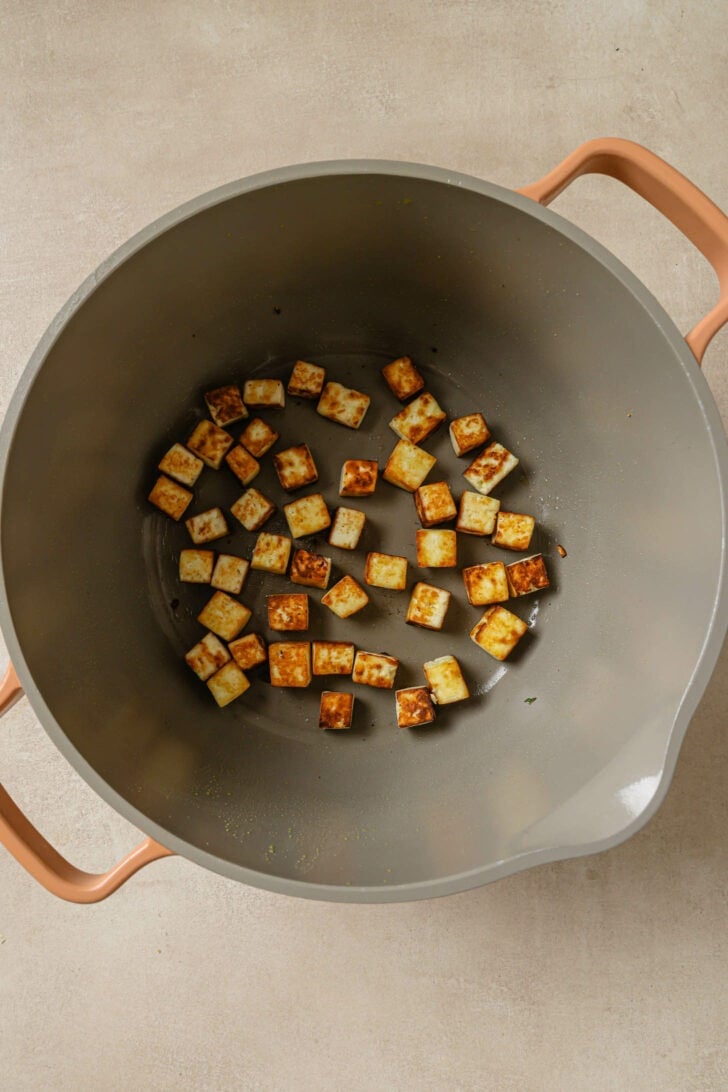
Cook the Peas and Paneer
- Heat the sauce again over medium heat. You’ll notice because of its thickness, craters and bubbles start to form. Stir often to prevent splattering. Add the peas first, cover with a lid, and allow to cook before introducing the paneer. Frozen peas are technically cooked before freezing, but the vegetables in curry recipes require more doneness. Adjust the liquid content, adding 1/2-3/4 cup water to make it runnier.
Many recipes simply fold in fresh paneer in before serving, but I love to give it some time to soften and take on the flavors of the curry. The key is to allow it to gently simmer on medium heat until the initially tough and chewy paneer softens and eases into the curry. Cooking it for too long will lead to its surface disintegrating.
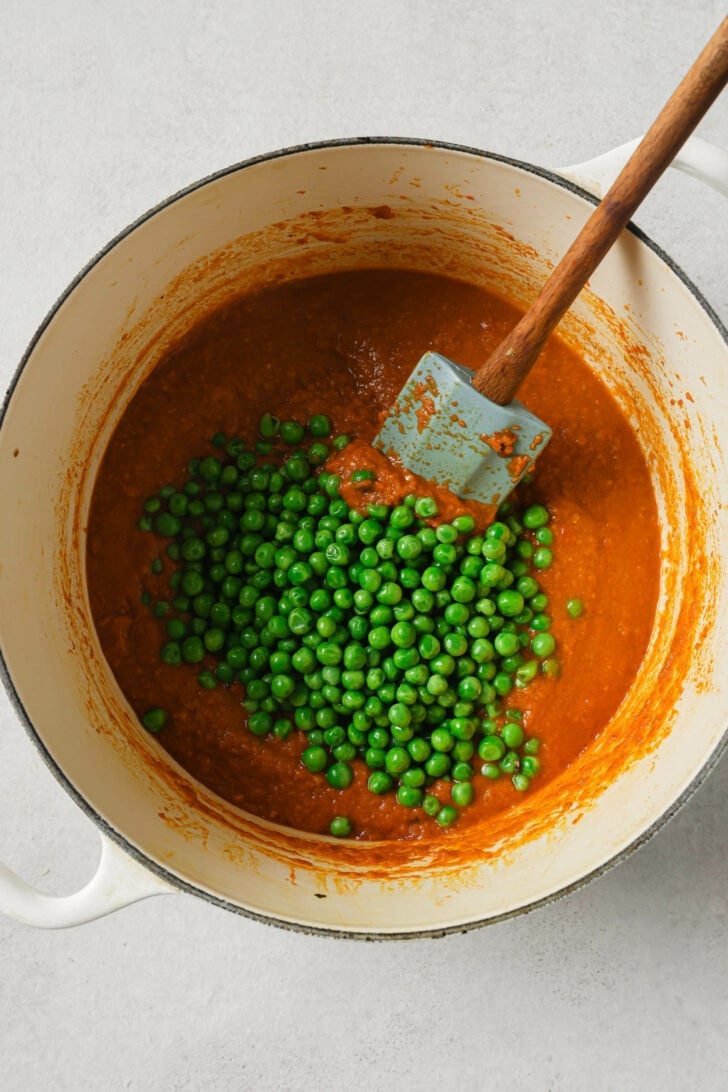
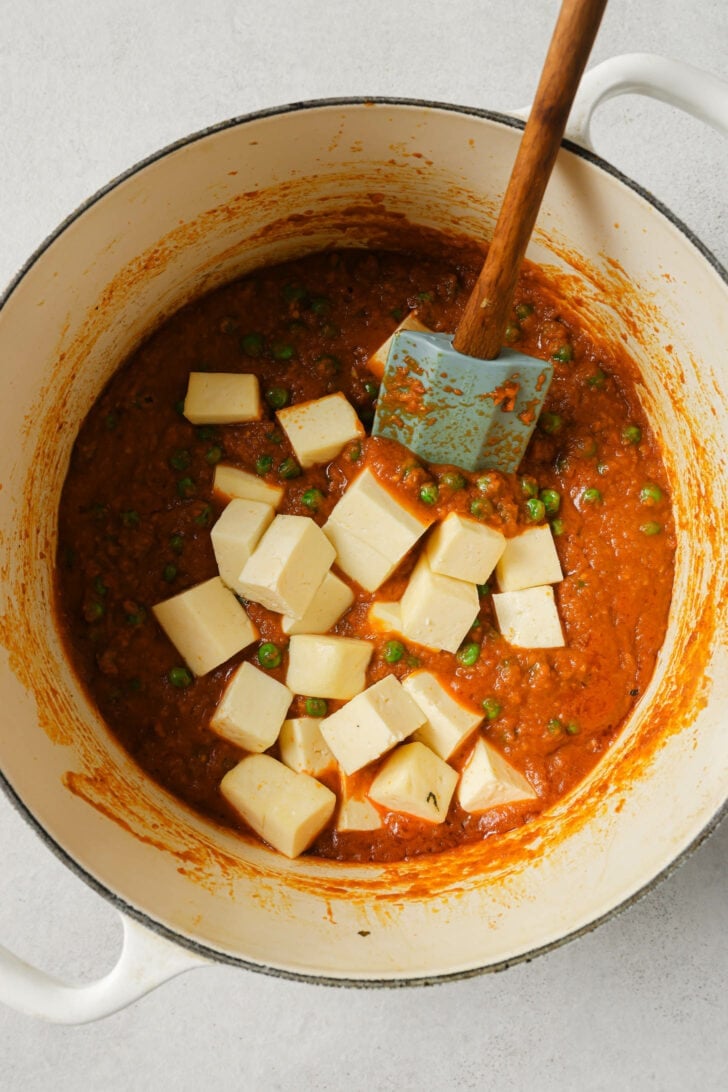
- Pour in the heavy cream and allow to come to a simmer. Remember that you can adjust the amount of cream depending on how light or rich you’d like it to be.
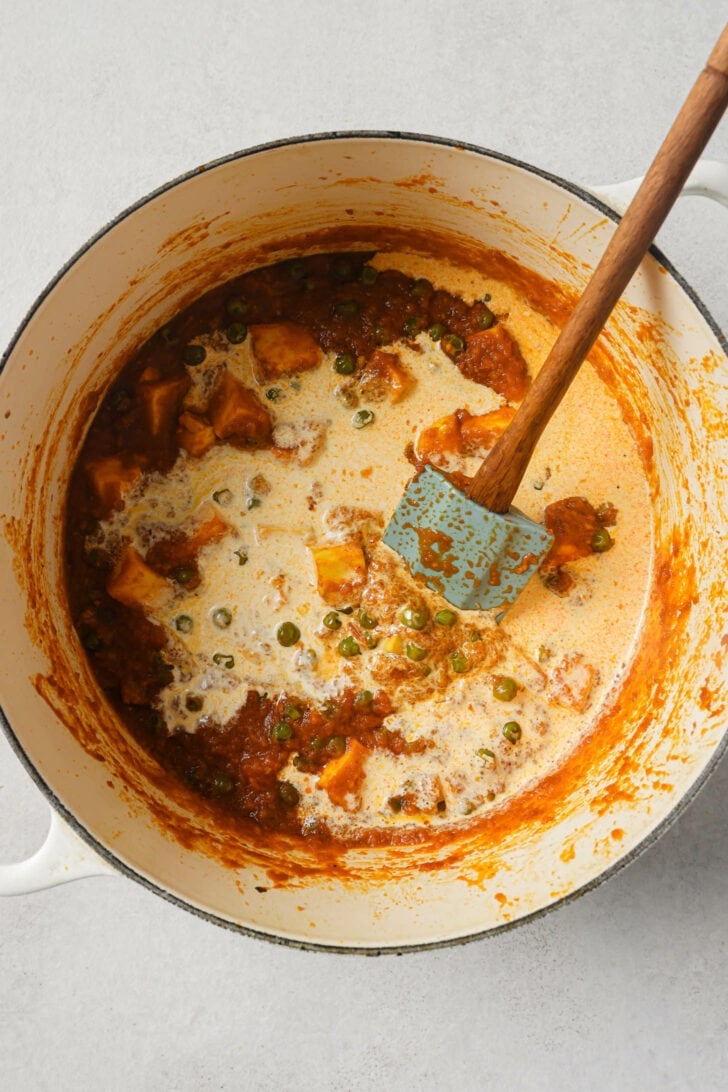
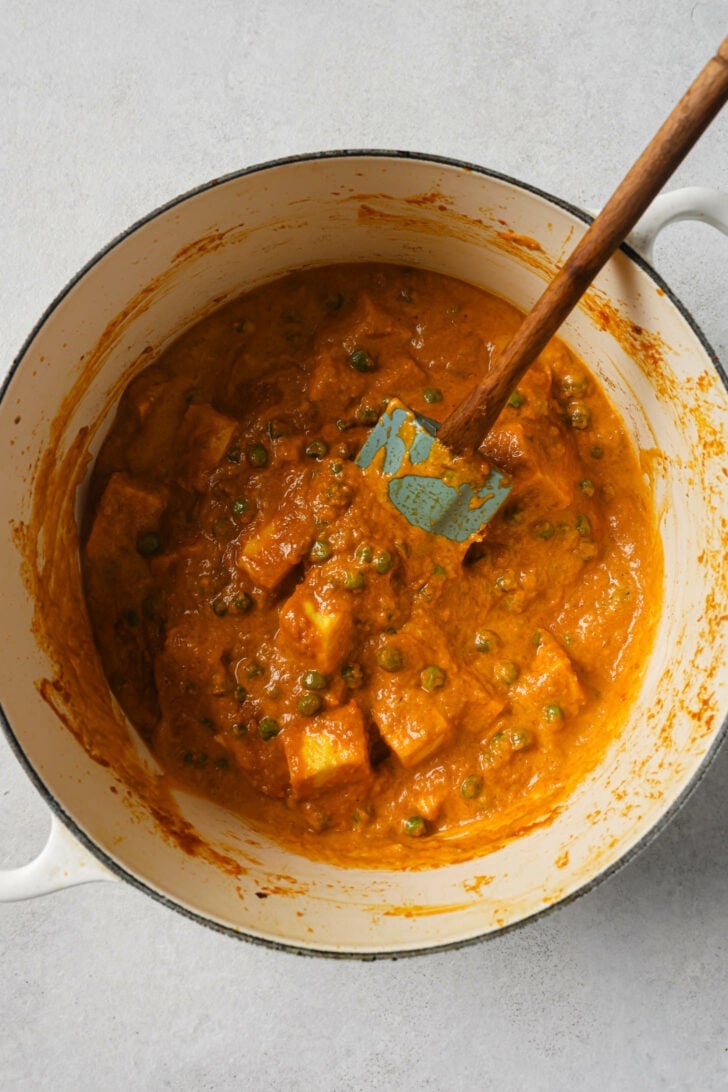
- Sprinkle with cilantro, garam masala, and methi (dried fenugreek) if you’d like.
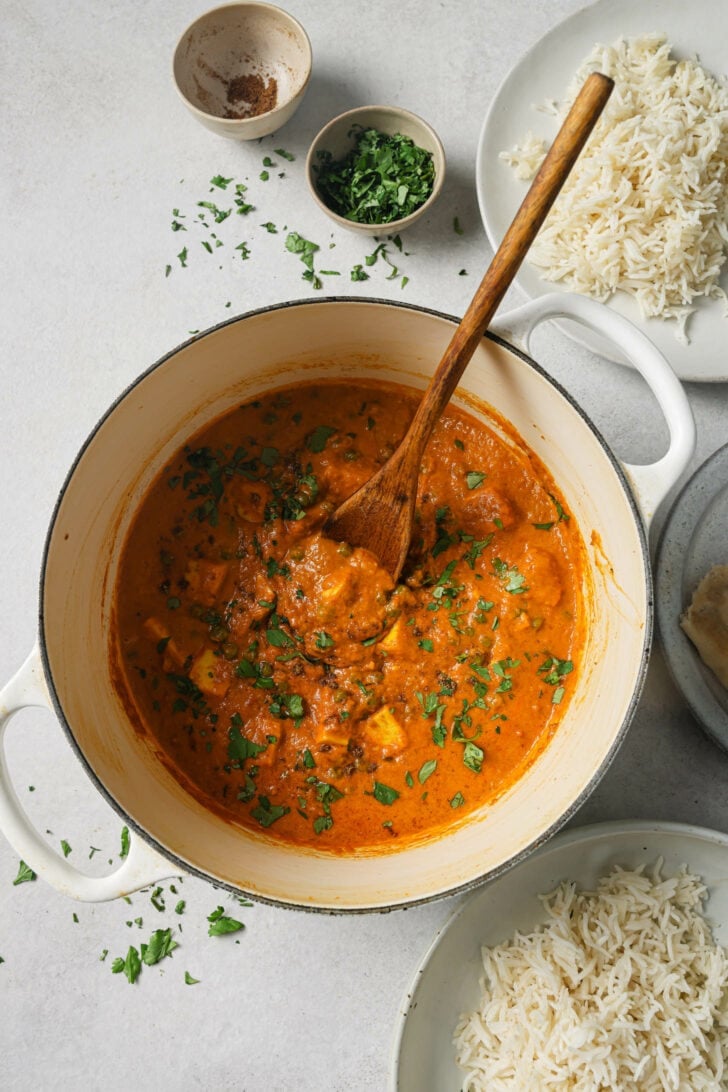
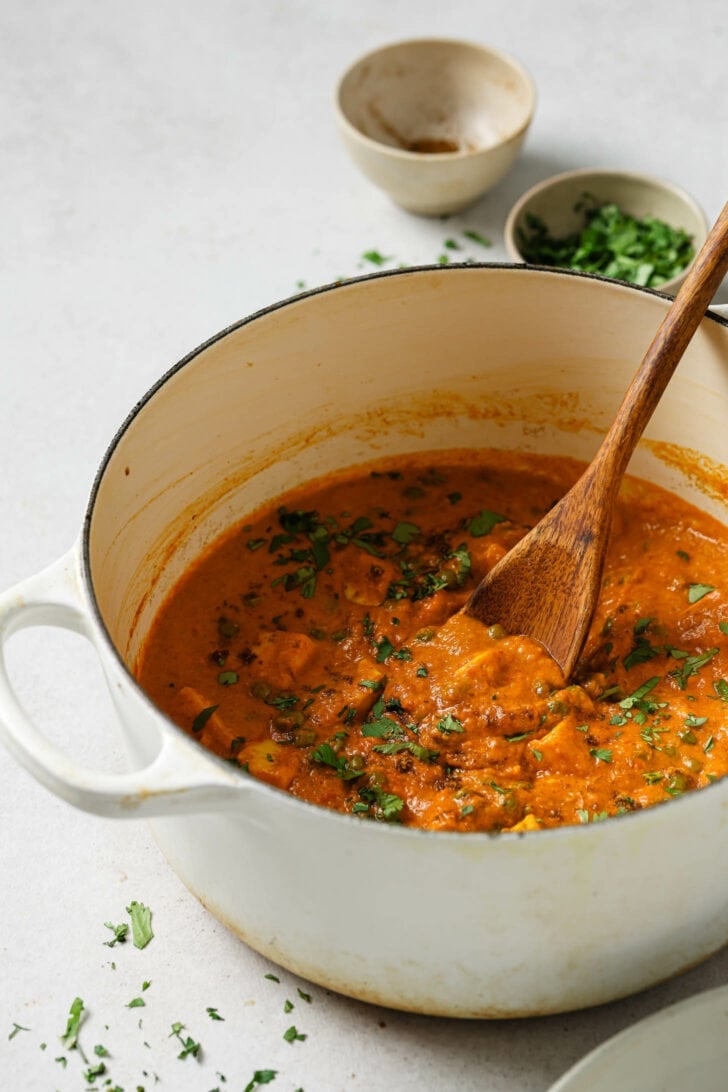
Variations
- Vegan, Dairy-free version: Use tofu instead of the Paneer. Replace heavy whipping cream with cashew cream, which is used in many traditional recipes.
- I find it’s plenty rich without butter, but if you’re skipping pan-frying paneer and want that buttery flavor, add 1 1/2 tbsp salted butter toward the end before garnishing.
- If you’re not puréeing the mixture, you could throw in a bay leaf. I love the aroma and flavor it adds, but don’t like to hunt for it before blending or find bits of it in the masala.
What to Serve it With
Matar Paneer pairs beautifully with roti, naan, or paratha. Since it has a fair amount of sauce, it’s equally great with plain basmati rice.

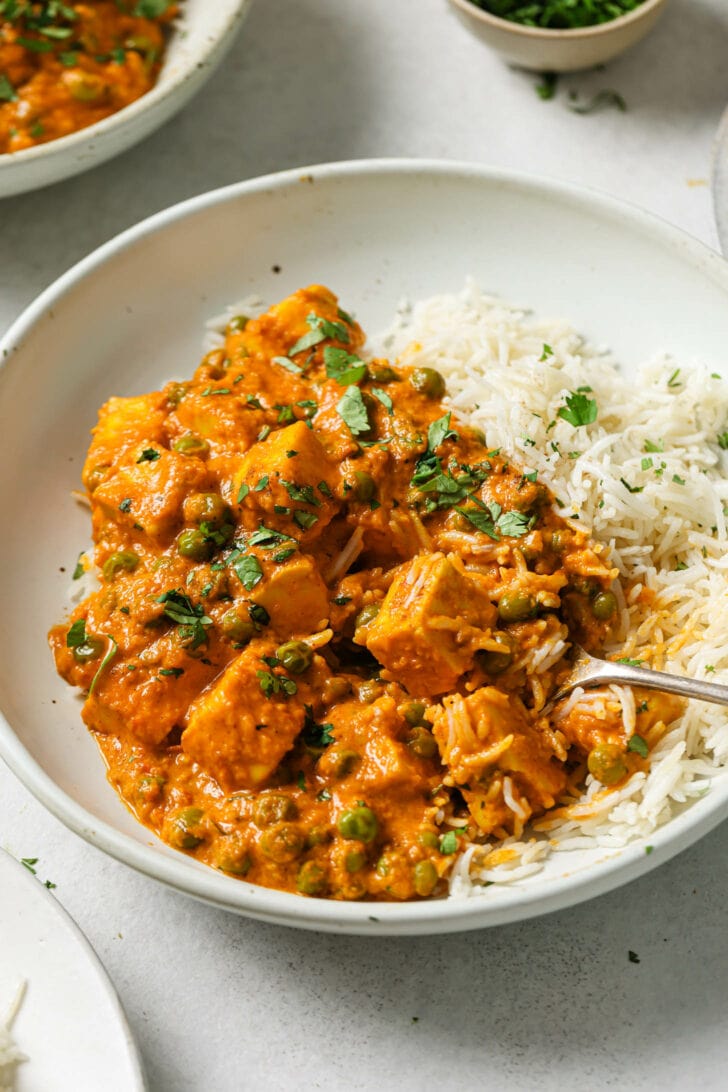
Tried this recipe? If you have a minute, please consider leaving a comment telling me how it was! If you have a photo of your dish, please feel free to upload it and share with others. If you’re on Instagram, please tag me so I can see your creations. I truly love hearing from you. Thank you!
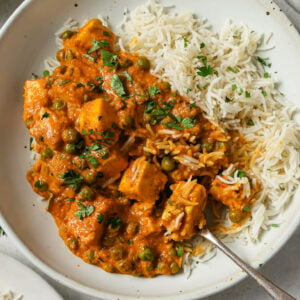
MATAR PANEER (Easy + Flavorful, Restaurant-Style)
Watch the Video
Ingredients
- 1/4 cup neutral oil, such as grapeseed oil
- 1 (300 g) large onion, finely chopped
- 5 garlic cloves, finely chopped or crushed
- 1- inch (~1 tbsp) ginger, finely chopped or crushed
- 2 tbsp (30 g) tomato paste
- 3 (~300 g) ripe Vine or Roma tomatoes, puréed in a food processor
- 1 small Serrano or Thai/bird’s eye green chili pepper, roughly chopped (deseeded for less heat)
- 1 green cardamom pod
- 2 tsp coriander powder
- 1 tsp Kashmiri chili powder or paprika
- 3/4 tsp cumin powder, or sub cumin seeds
- 1/2 tsp turmeric powder
- 1/2 tsp red chili powder or cayenne
- 1 1/2 tsp kosher salt
- 1 cup water
- 1 1/2 tbsp ghee or butter (salted/unsalted both fine), optional – for pan-frying the paneer
- 8 oz (226 g) store-bought paneer, cut into ~1/2 inch cubes – see Note 1 on how to cut paneer cubes
- 1/4 tsp sugar, optional – omit if tomatoes are sweet enough
- 1 1/4 cup (~165 g) frozen green peas, thawed
- 1/4 cup heavy whipping cream, plus more to drizzle
- 1/8-1/4 tsp garam masala
- 1/2 tsp dried methi (fenugreek leaves), crushed between the palms of your hands -optional
- 3 tbsp cilantro, finely chopped
Instructions
- Heat oil in a medium pan over medium-high heat. Once hot, add the onions and sauté until golden, 10-12 minutes. Deglaze with ¼ cup of water. Once the water dries up, continue to sauté for another 2-3 minutes until the onions turn a deeper brown color. Add the garlic and ginger and sauté for 2 minutes, until aromatic.
- Add the tomato paste, puréed tomatoes, green chili pepper, cardamom pod, ground spice powders (coriander, cumin, Kashmiri chili/paprika, turmeric, and red chili) and salt and continue to cook for 8-10 minutes, until the tomatoes are reduced and the oil starts to separate. If the tomato mixture starts to stick, deglaze again with ¼ cup water.
- Turn off the heat and let this tomato masala cool for a few minutes before transferring it to a food processor. Process on High speed for about 1 minute, until puréed to a mostly smooth sauce. (Note 2) Pour this sauce back into the same pan along with the measured water.
- Optional – If you’re pan-searing the paneer, do so now. Heat ghee or butter in a large nonstick pan over medium heat. Place the paneer cubes in a single layer and cook, turning constantly, until lightly golden on all sides, ~6-8 minutes in total. If it starts to pop, reduce the heat. Transfer the paneer from the pan to a plate. Set aside.
- Heat the sauce over medium heat. It’ll start to bubble and form craters. Stir in sugar, if you'd like it a tad sweeter (I always add it). Add the peas, cover with the lid slightly ajar, and let simmer for 5-7 minutes, stirring occasionally. Stir in paneer and let it simmer for another 10 minutes, uncovered. Stir occasionally to prevent it from sticking to the bottom. If the masala starts to dry up, add 1/2-3/4 cup water and bring to a simmer.
- Pour in the heavy cream and allow to come to a simmer. Taste and adjust the salt, if needed. Turn off the heat and sprinkle with crushed methi (if using), garam masala, and cilantro leaves. Drizzle with more cream, if you'd like. Serve hot with basmati rice, roti, naan, or paratha.


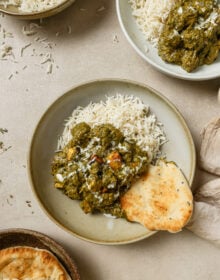
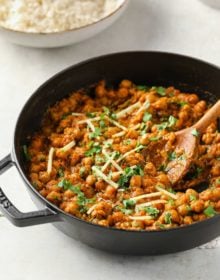
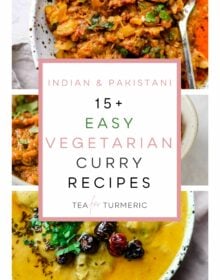
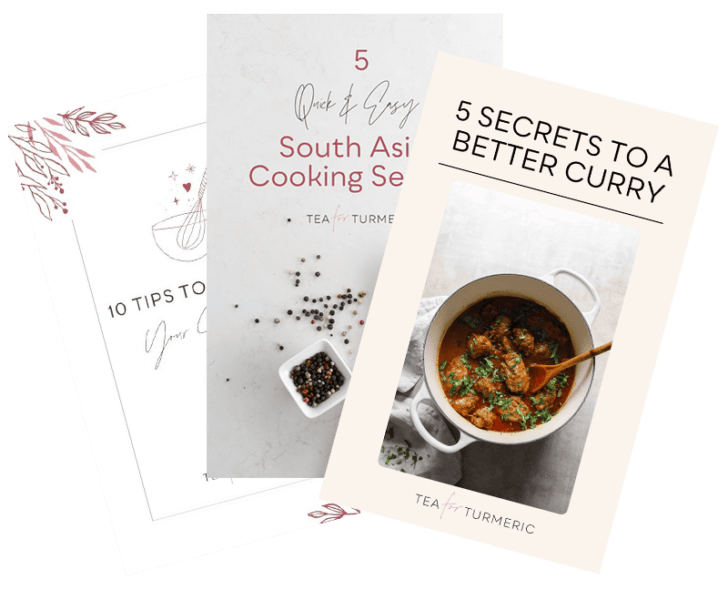
16 Comments on “Matar Paneer (Easy + Flavorful, Restaurant-Style)”
Another absolute winner! This is a definite restaurant-quality recipe. So tasty and straightforward to follow for any level of home cook. The sauce is divine when mopped up with some naan or parata. Thank you Izzah for being a life saver over and over!
What a nice comment. Made my morning! Thank you so much, Salma!
Another great hit, didn’t expect anything other than wonderful.
I know the recipe says the fenugreek is optional but it really made a difference at the end – would suggest adding it to your shopping list. I used frozen as it’s not a regular ingredient I use and it worked fine!
So glad to hear it. Thank you, Rabs! And thanks for the great feedback regarding the methi. Very helpful!
A very tasty dish! So glad I came across this recipe
Thank you Priyanka 🙂 Glad to hear you enjoyed the Matar Paneer!
I had my in laws coming around and thought I’ll double the recipe. It was absolutely delicious! My mother in law asking me for the recipe 👀 never thought I ll see this day coming haha
Thank you ☺️
Yay! That is wonderful to hear Khadijah 🙂
Very detailed description of the procedure and full of useful advice. Excellent dish! Thanks!
Thank you Miroslav! Glad to hear you enjoyed it 🙂
Wonderful yummy recipe. Tastes great
Thank you Iona! Glad to hear you enjoyed the Matar Paneer 🙂
Izzah, can I freeze this?
Thanks Jenny
Hi Jenny, given both paneer & peas freeze well, I think this would take well to freezing. Would love to hear back if you try it!
I made lots and froze some of it and it was delicious when reheated.
Thanks izzah!
Thanks great to hear Jenny! Thanks for sharing 🙂